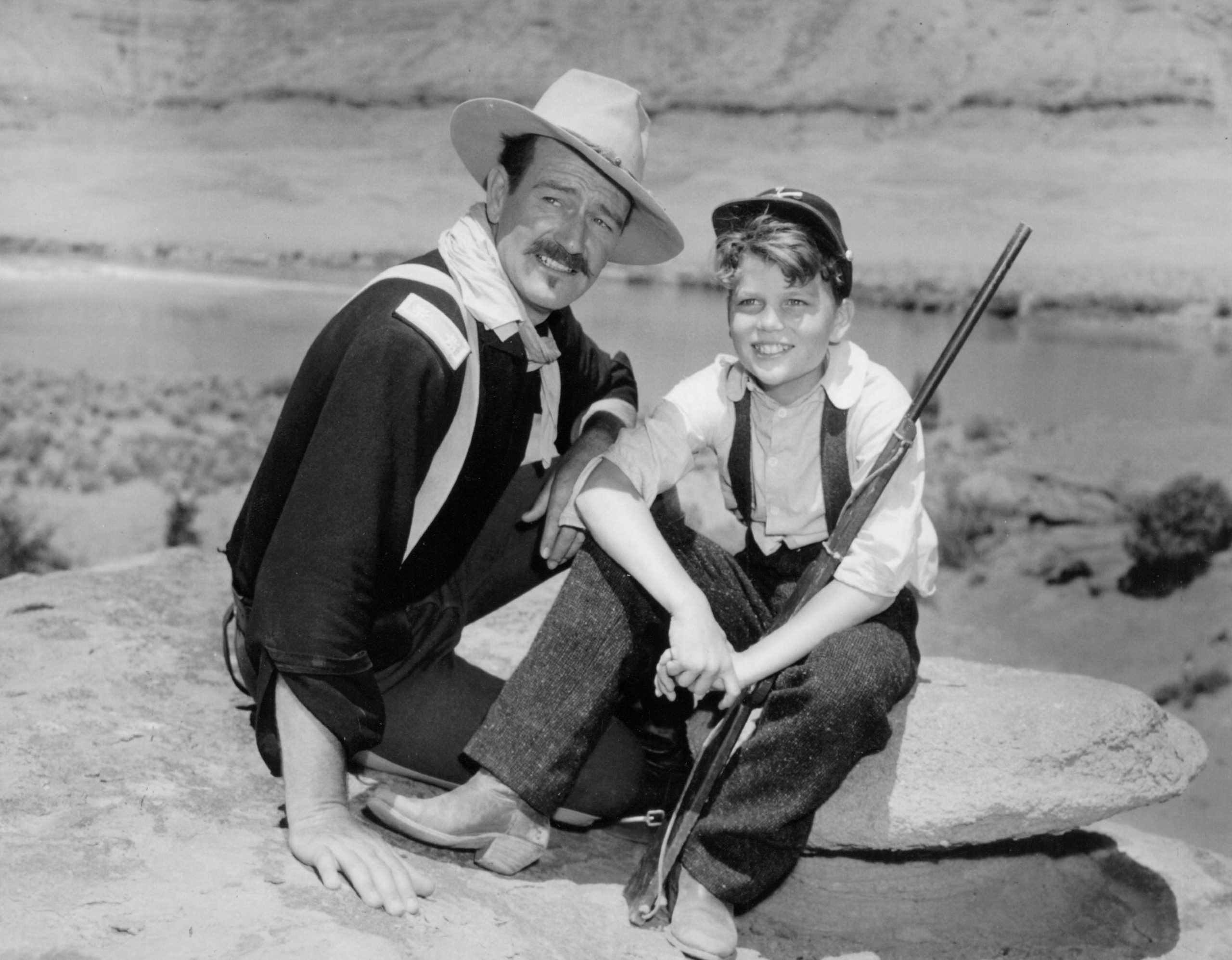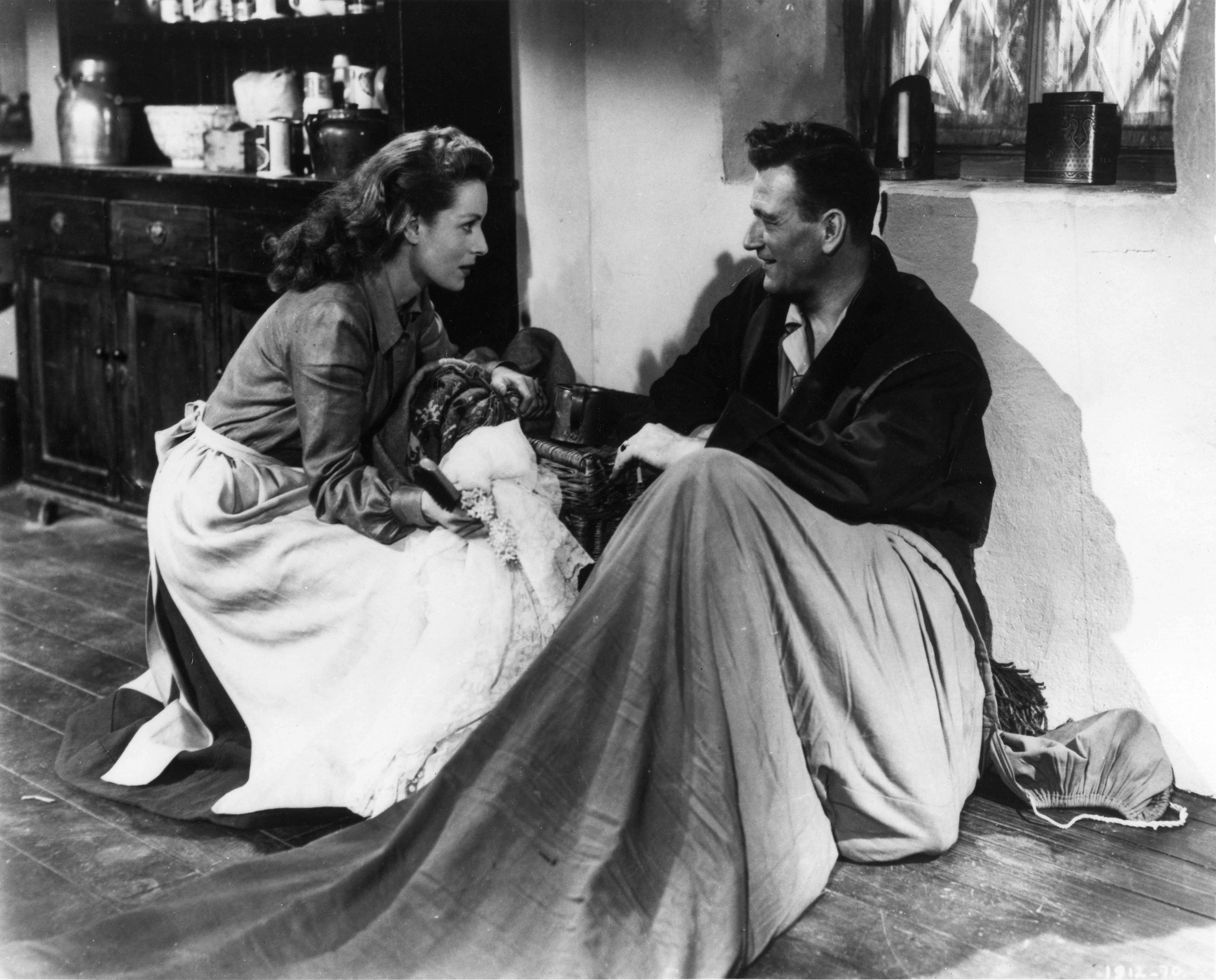
John Wayne reaches a new tier of stardom, adds producer to his resume and smoothly navigates the shifting landscape of the 1950s.
Written by Constance Dunn
In 1950 John Wayne was the number one box office draw according to the annual “Top Ten Money Making Stars Poll”—a feat he would again achieve in 1951. It was a good decade to be John Wayne: from 1950 to 1959 there were only two years where Duke didn’t land in the top three of the influential poll of American movie exhibitors, conducted every year by the Quigley Publishing Company and considered the bellwether of a star’s box office bona fides.
Hondo (1953). The Quiet Man (1952). Flying Leathernecks (1951). The Searchers (1956). Blood Alley (1955). These are among the movies that would define John Wayne during the most commercially successful decade of his career—and continue to distinguish him as a living, breathing symbol of American ideals around the globe. Hollywood films were increasingly being exported to foreign markets, and back on America soil the rise of television coincided with a recycling of many of Wayne’s early career Westerns, aired on the small screen by stations eager to fill hours of programming.

Many changes were afoot in this post-War decade, not least of all in Hollywood. The studio system was ending, replaced by the practice of hiring actors on a project basis, versus having a stable of them under contract. Since the 1930s John Wayne had been signed with Republic Pictures, but in 1952 he left his longtime studio to form Wayne-Fellows Productions. It was a bold move—Duke, then 45 years old, was leaving Republic not to be a freelance actor, but to make his own films.
His investment would return swift dividends—1954 saw the release of The High and the Mighty, produced by his new company. The gripping air disaster film was one of the most commercially successful films of the year and received six Academy Award nominations. (It won for Best Music, Original Song, and two of its actresses received Golden Globes for their performances.) In 1956 the production company became Batjac Productions, the banner under which Wayne would produce nearly 30 more films before his death. Batjac was a misspelling of Batak, a reference from a 1948 film Wayne made at Republic, Wake of the Red Witch, with his recurring leading lady Gail Russell. After Wayne’s death, eldest son Michael would manage Batjac until his own passing in 2003.
During this decade, the evolution of John Wayne the star can be seen in two roles he played at the start and end of the 1950s: In the two hit Westerns Rio Grande (1950) and Rio Bravo (1959). The first, a black and white film made with close collaborator John Ford and star Maureen O’Hara, is neatly aligned with the established Wayne formula: Duke plays dashing cavalry officer Kirby Yorke, who successfully beats back warring Apaches. By contrast, Rio Bravo was filmed in color, and though top billing goes to Wayne, then in his early 50s and playing a visibly more seasoned but still grit-filled hero named Sheriff John T. Chance, the movie is more of an ensemble piece that highlights a new wave of Hollywood stars, notably Ricky Nelson, Dean Martin and Angie Dickinson.
While American culture and Hollywood were swiftly changing—and would continue to even more vividly in the next decade—certain things, like the onscreen persona of John Wayne, would remain the same. Which suited his movie-going public just fine.


